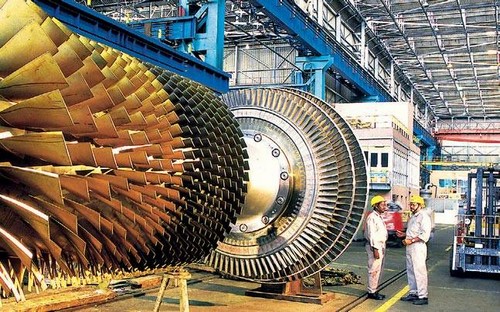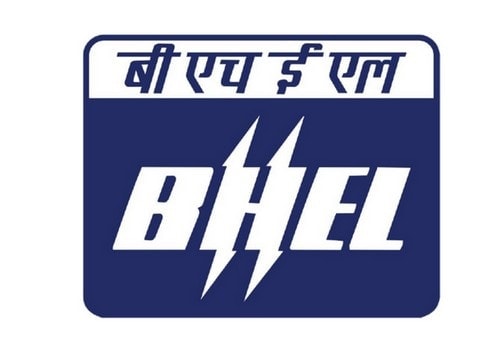Bharat Heavy Electricals Limited (BHEL) is an electrical equipment industry that was formed during the year 1964 and is headquartered in New Delhi, India. It is owned and formed by the Government of India.
It is the largest power generation equipment manufacturer that manufactures various products like Gas and Steam Turbines, Boilers, Electric Motors, Electric Locomotives, Generators, Heat Exchangers, Switchgears and Sensors, Automation and Control Systems, Power Electronics, and Transmission Systems.
During the year 1991, BHEL was converted into a public limited company. Over a period of years, it has developed the capacity to produce much equipment for all sectors.
BHEL is engaged in various operations like design, engineering, construction, testing, and servicing of many products. BHEL has a huge network of about 17 manufacturing units, two maintenance units, eight service centers, four regional offices.
It also has eight overseas offices and seven joint ventures. BHEL has established the competence to deliver about 20,000 MW p.a of power equipment to meet the rising demand for power generation equipment.
BHEL has been transferring its power and industry segment products and services for about 40 years. Its global visibility has been spread across 76 countries in about six continents.
Ever since its formation, BHEL has made its Quality foundation strong. During the year 1970-90, BHEL has implemented Quality Manual for the entire organization that includes systems, tasks, procedures, and processes.
Second tier documents like standard technological procedures, test plans, process sheets, non-conformance handling systems, and procedures were implemented during this time. Since that time, BHEL is leading in Calibration System, Quality Planning, and Quality Circles impression in India.
About BHEL (Bharat Heavy Electricals Limited)
- Type: Public sector enterprise.
- Industry: Heavy engineering.
- Founded: 25 November 1956.
- Founders: Government of India.
- Headquarters: New Delhi, India.
- Area served: Worldwide.
- Current CEO: Nalin Shinghal.
- Number of employees: 70,000+.
- Major products: Power plant equipment, boilers, turbines, transformers, switchgear, locomotives, railway rolling stock, defense equipment, and industrial equipment.
Through this article, let us discuss the SWOT analysis of BHEL.
Table of Contents
Strengths in the SWOT Analysis of BHEL
- Strong Base in Engineering – BHEL has a strong base in engineering and a stable industrial relationship. It is the largest power generation equipment manufacturer that manufactures various products like Gas and Steam Turbines, Boilers, Electric Motors, Electric Locomotives, Generators, Heat Exchangers, Switchgears and Sensors, Automation and Control Systems, Power Electronics, and Transmission Systems.
- Continuous Profits – BHEL has been generating continuous profits and paying dividends since the year 1974. This is a great strength to the company.
- Support from Collaborators – BHEL has great support from the collaborators that have helped them to obtain many modern technologies and then transform it to suit the Indian conditions.
- Huge Customer Base – BHEL has a huge customer base in the domestic business that leads to being popular and having a greater influence in the market.
- Huge Products – BHEL produces almost 190 products and more than 30 major product groups.
- Quality Products – The Quality foundation of BHEL is quite strong. During the year 1970-90, BHEL has implemented Quality Manual for the entire organization that includes systems, tasks, procedures, and processes. Second tier documents like standard technological procedures, test plans, process sheets, non-conformance handling systems, and procedures were implemented during this time. Since that time, BHEL is leading in Calibration System, Quality Planning, and Quality Circles impression in India.
- Research & Development – BHEL has always faced a strong emphasis on innovation and creative advancement. It has led to the develop many technologically competitive products and services. Their labs at the Research & Development wing have Permanent Magnet Machines, Insulation, and Chemical Sciences, Intelligent Machine Control, Electrical Machines, Power Electronic Systems, High Voltage Engineering, GIP, and Switchgear Development, and many more.
Weaknesses in the SWOT Analysis of BHEL
- The inability for Certain Activities – There have been few situations have BHEL had the inability to provide supplier’s credit, financing of power projects, and soft loans.
- Longer Delivery Cycles – BHEL delivers products by taking more time than international competitors. This could be a weakness having longer delivery cycles would have a huge impact on the business.
- Less Marketing Infrastructure – BHEL lacks effective marketing infrastructure that is, in fact, a weakness for the company.
- Procurement Process – The procurement process in BHEL is cumbersome, and they are subject to auditing.
- PSU Status – PSU status is yet another weakness for BHEL as it is subject to the rules and regulations. It is forced to carry a huge amount of labor force that is unable to reduce.
- Criticism – The BHEL project, 1340-megawatt coal power plant situated in Rampal that is close to the Sundarban Mangrove Forest for Bangladesh-India Friendship Power Company is a joint venture. This project has faced a lot of criticism for impacting the environment and the likely harm that could cause to the largest mangrove forest in the world.
Opportunities in the SWOT Analysis of BHEL
- Demand for Power Domain – There exists a huge demand in the power domain to produce more equipment. This provides a huge opportunity for BHEL.
- Aging Power Plants – As BHEL is into the industry for a long time, there are many plants that are quite old and require services and spare parts. On doing this, BHEL can carry out production faster and attach more visibility in the market.
- Increased Private Sector Participation – BHEL sees a healthier work environment and increased private sector participation in the operation of distribution circles as well.
- Increase in Defense Budget – An increase in defense budget sees a lot of opportunity for BHEL as it will increase the top line for them.
- Joint Venture with Siemens – Power Plant Performance Improvement Ltd, which is a joint venture with Siemens, is a tie-up that will be beneficial and provides a lot of scope for the business.
Threats in the SWOT Analysis of BHEL
- Competitors – BHEL faces a lot of competition from both the international and national companies.
- Associations in the Industry – Associations in the industry have drastically reduced the company’s turn over. This is, in fact, a big threat to the company.
- Increase in Small Contractors – Increased in the number of small contractors is a big threat to BHEL that leads to price wars.
- New Players in the Market – Emerging new players in the market is also a serious threat to the company.
Liked this post? Check out the complete series on SWOT

